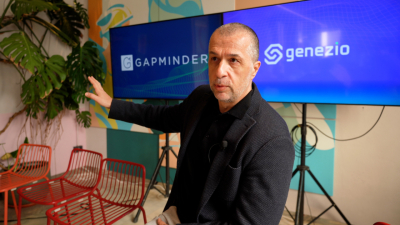The media and entertainment market includes advertising and media agencies, television and media companies, internet services providers, book and video games industry, Ruxandra Bandila, Marketing & Business Development Director, PricewaterhouseCoopers Romania told Wall-Street.
The most dynamic market segment will be the internet access with spending expected to double by 2014, from $810 million in 2009 to $1.6 billion. Advertising spending will also see a noticeable growth in Romania, from $417 million to $747 million in 2014. On a different note, the end consumer spending for entertainment and media, excluding spending on Internet access, will grow at a slow annual compound pace of 1.9%, reaching $1.15 billion in 2014, up from $1.05 billion in 2009.
The global media and entertainment market, as a whole, will grow by 5% compounded annually for the entire forecast period to 2014 reaching $1.7 trillion, up from $1.3 trillion in 2009. Fastest growing region throughout the forecast period is Latin America growing at 8.8% compound annual rate during the next 5 years to $77 billion in 2014. Asia Pacific is next at 6.4% CAR through 2014 to $475 billion. Europe, Middle East and Africa follows at 4.6% to $581 billion in 2014. The North American market will register the slowest growth pace at 3.9% CAR taking it from $460 billion in 2009 to $558 billion in 2014.
Although there is consistency in the inevitable migration to digital, the ways in which this presents itself and the pacer of change continues to vary by market. For example, the mobile internet explosion has already happened in Japan, accounting for some 53% of global spending on mobile internet access in 2009, while other markets are still at the bottom of their growth curve.
Advertising on the rebound
Spend is unlikely to return to pre-crisis levels. By 2014, the US advertising spend is expected to still be 9% below its 2006 level. Overall global advertising will increase at 4.2% CAR from $406 billion in 2009, to $498 billion in 2014. Internet advertising will join television in 2014, as the only media with spending in excess of $100 billion.
The projections reflect the fragmentation of the market and behavioral changes of consumers. Brands are changing their focus from advertising on a medium to marketing through and with content.
PwC believes that three themes will emerge from changing consumer behavior:
The rising power of mobility and devices: Advances in technology and products will see increasingly converged, multi-functional and interoperable mobile devices come of age as a consumption platform by the end of 2011. Consumers are increasingly demanding “ubiquity”, with content flowing across different devices to support ever-greater interactivity and convenience. They are using mobile in new ways, and downloading ever-increasing numbers of mobile applications (“apps”) to support their lifestyles. The ability to consume and interact with content anywhere, anytime—and to share and discuss that content experience with other people via social networks—will become an increasingly integral part of people’s lives.
The growing dominance of the Internet experience over all content consumption: Using the Internet is now one of the great unifying experiences of the current era for consumers everywhere—and their expectation of Internet-style interactivity and access to content will continue to expand across media consumption in every segment. This trend is initially at its clearest in television. Equally, people are already consuming magazines and newspapers on Internet-enabled tablets, and streaming personalized music services such as Pandora in preference to buying physical CDs or even digital downloads.
Increasing engagement and readiness to pay for content—driven by improved consumption experiences and convenience: Ongoing fragmentation means that media offerings will need greater consumer engagement and quality to get themselves heard - and paid. Consumers are more willing to pay for content when accompanied by convenience and flexibility in usage, personalization, and/or a differentiated experience that cannot be created elsewhere. Local relevance will also become important once again as an aspect of convenience and relevance.
“The use of the Internet has become one of the great unifying experiences shared by billions of people across the world and this is now causing a parallel trend with the “re-socialization” of the media consumption experience. Historically reading books or newspapers has been a solitary activity. However the combination of digital access, mobility and social networking is seeing consumption of all forms of media migrate from a solo activity towards being a social experience with viewers use social networking forums to discuss and share their views and content”, added Dinu Bumbacea Partner, Leader of the Telecom, Entertainment and Media Industry Group of PricewaterhouseCoopers Central and Eastern Europe.
Numbers of the report:
• There were 12 countries in 2009 with E&M spending above US$20 billion, led by the United States at US$428 billion and Japan at US$164 billion. Of the leading countries, the People’s Republic of China (PRC) will be by far the fastest growing with a projected 12 per cent compound annual increase, fuelled by a vibrant economy and large increases in broadband penetration that in turn propel other segments. Japan will be the slowest growing of the leading countries at 2.8 per cent compounded annually.
• Internet access is a key driver of spending in most segments. Increased broadband penetration will boost wired access while growing smartphone penetration and wireless network upgrades will drive mobile access. Spending on wired and mobile Internet access will rise from US$228 billion in 2009 to US$351 billion in 2014.
• We expect a relatively flat market in aggregate global advertising and consumer/end-user spending in 2010, improved growth in 2011 and a return to mid-single-digit gains during 2014. Overall global advertising will increase at a 4.2 per cent CAR from US$406 billion in 2009 to US$498 billion in 2014. Overall consumer/end-user spending will rise from US$688 billion in 2009 to US$842 billion in 2014, a 4.1 per cent compound annual increase
• Globally, the video game market will grow from US$52.5 billion in 2009 to US$86.8 billion in 2014, growing at a compound growth rate of 10.6 per cent. This will make it the second fastest-growing segment of E&M behind internet advertising wired and mobile, but will be the fastest-growing consumer/end user segment ahead of TV subscr'+'iptions and license fees.
• The global television subscr'+'iption and license fee market will increase from $185.9 billion in 2009 to US$258.1 billion in 2014, a CAGR of 6.8 per cent. This will outpace TV advertising, which will grow at a CAGR of 5.7 per cent. The biggest component of this market is subscr'+'iption spending and this will increase at 7.5 per cent CAR to US$210.8 billion in 2014. Asia Pacific will be the fastest-growing region with a 10 per cent compound annual increase rising to US$47.1 billion in 2014 from US$29.2 billion in 2009.
• Total global consumer magazines market fell by 10.6 percent in 2009. We project an additional 2.7 per cent decrease in 2010, a flat market in 2011, and modest growth during 2012–14. As a result, spending will total $74 billion in 2014, up 0.7 percent compounded annually from $71.5 billion in 2009.
• Electronic educational books will grow at a CAGR of 36.5 per cent globally throughout the forecast period yet will still only account for less than 6 per cent of global spend on educational books in 2014.
PricewaterhouseCoopers Global Entertainment & Media Outlook 2010-2014, the 11th annual edition, contains in-depth analyses and forecasts of 13 major industry segments across four regions of the globe: North America (USA, Canada), EMEA (Europe, Middle East and Africa), Asia Pacific and Latin America.
Citeste si:
Calculator Salariu: Află câți bani primești în mână în funcție de salariul brut »
Te-ar putea interesa și:



















































































![HR [PLAY] Tech Workout - 11...](https://www.wall-street.ro/image_thumbs/thumbs/973/973fe0a3888d417feff63de42e814180-260x260-00-65.jpg?v=1713490474)









